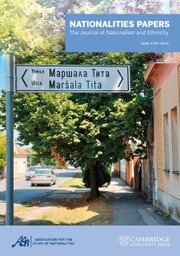No CrossRef data available.
Article contents
Introduction
Published online by Cambridge University Press: 20 November 2018
Extract
Right at the start, one word in the title of this special topic issue requires clarification: the word “minority.” We will not try to define the term here, but it is only fair to say that some of the groups which are mentioned or discussed are not recognized as minorities or have a rather dubious legal position, as, for example, the Kashubs and Lemkos in Poland or Macedonians in Greece. As to the notion of linguistic minority: it is a term very often used but rarely defined. That it is often used has to do with the fact that most minorities in Europe speak a language or a dialect or variant which discriminates them from the majority. As a matter of fact, the nationalist traditions in Europe seem to take more or less for granted that a minority without a separate language is not a real minority. Language questions have been in the forefront of most nation-building projects or ethnic mobilizations in Europe, and so it has become more or less axiomatic that every nation or ethnic group should have its own language. As an example, the Bosnian language may be cited. The Bosnians—or rather the Bosniaks—insist on naming the language they use Bosnian instead of, as before, Serbo-Croatian or Croato-Serbian. They also insist on their right to standardize their language in their own fashion. Another good example is the Rusyn language, or rather—to be more precise—the Rusyn languages in the Carpathian area. As Rusyns, not Ukrainians, they are now trying to create their own standard language or languages on the basis of their own dialects. The Rusyns in Yugoslavia started this process earlier; consequently, the Rusyn language of Yugoslavia is now to be considered one of the standard Slavic languages.
- Type
- Introduction
- Information
- Copyright
- Copyright © 1999 Association for the Study of Nationalities




